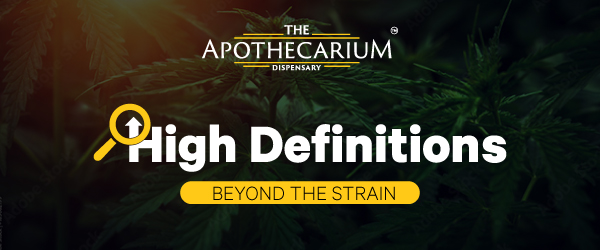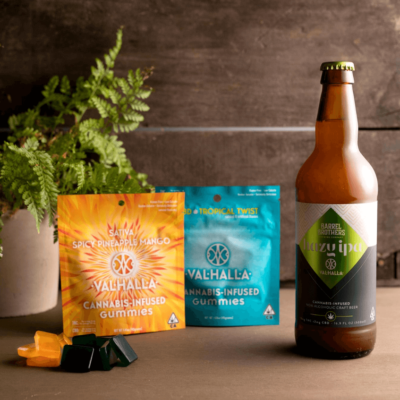
Cannabis 101: Edibles
Cannabis 101: Edibles
Welcome back to our Cannabis 101 series, where we explore the diverse world of cannabis and its many consumption methods. In this post, we’re diving into the delicious realm of cannabis edibles – a discreet and long-lasting way to enjoy the benefits of cannabis, without the need for inhalation.
Why are edibles becoming increasingly popular? Cannabis edibles offer several advantages over other forms of consumption. Firstly, they provide a discreet and smoke-free option, making them a great choice for those who prefer not to inhale smoke or vapor. Secondly, the effects of edibles tend to offer potent long-lasting effects, delivering a uniquely enjoyable experience. Lastly, with a wide variety of flavors and forms to choose from, edibles cater to different tastes and preferences.

How have edibles been used in medical treatments? In recent years, cannabis edibles have shown promise in the treatment of various medical conditions. For example, tinctures have been used to manage symptoms of Alzheimer’s, Parkinson’s, and other neurodegenerative diseases. The cannabinoids in cannabis, such as THC and CBD, have been shown to possess neuroprotective and anti-inflammatory properties, which may help reduce inflammation and promote overall brain health [1].
A study published in the Journal of Alzheimer’s Disease found that a THC-based oral spray reduced agitation and aggression in patients with Alzheimer’s disease [2]. Another study demonstrated that oral CBD oil administration improved the quality of life and reduced Parkinson’s disease symptoms in patients [3].
Cannabis edibles have also been used to manage chronic pain, nausea, and vomiting associated with cancer treatment, as well as to improve appetite in patients with HIV/AIDS [4]. The long-lasting effects of edibles can provide sustained relief for those struggling with these conditions, improving their overall quality of life.
Cannabis edibles come in various forms, including:

Gummies, lozenges and candies: These sweet and often chewy treats are infused with precise doses of cannabis, offering a tasty and convenient way to enjoy the effects of cannabis. They come in various flavors, shapes, and potencies, making them versatile and enjoyable options to suit different preferences. You can even find gummy blends including other cannabinoids such as CBG, CBN and CBD. Brands like Wana, carried at The Apothecarium, have become increasingly popular for formulations targeted at the users’ individual needs.
Baked goods: Cannabis-infused cookies, brownies, and other baked goods are classic edibles that can be made in your own kitchen with the use of a concentrated THC distillate. However, be cautious with portion sizes, as it can be easy to overconsume these delicious treats. Like gummies, distillates are readily available at The Apothecarium.

Beverages: Cannabis-infused beverages, including teas, coffees, sodas, and even mocktails, offer a refreshing and thirst-quenching way to enjoy cannabis. These drinks provide a more gradual onset of effects, making them an excellent choice for those seeking a more controlled experience.
Tinctures and sublingual strips: These products are absorbed under the tongue, providing rapid effects without the need for digestion. They are an excellent option for those seeking a fast-acting and discreet edible experience.
When trying cannabis edibles for the first time, it’s essential to start with a low dose (typically between 2.5 and 5 milligrams of THC) and wait for at least one to two hours before consuming more. Edibles take longer to take effect compared to inhaled methods, usually between 30 minutes to 2 hours, and their effects can last anywhere from 4 to 8 hours or longer, depending on the individual and the dose. Patience is crucial to avoid overconsumption and ensure a positive experience.
In conclusion, cannabis edibles offer a discreet, enjoyable, and long-lasting method of consuming cannabis, which has shown promise in the treatment of various medical conditions. As research on the therapeutic potential of cannabis continues to grow, we can expect to see more evidence supporting the use of edibles for symptom management and improving patients’ quality of life.
As always, choose the method that works best for you, start with a low dose, and enjoy the delightful world of cannabis edibles!
References:
Hampson, A. J., Grimaldi, M., Axelrod, J., & Wink, D. (1998). Cannabidiol and (-)Δ9-tetrahydrocannabinol are neuroprotective antioxidants. Proceedings of the National Academy of Sciences, 95(14), 8268-8273. https://www.pnas.org/content/95/14/8268
Walther, S., Mahlberg, R., Eichmann, U., & Kunz, D. (2006). Δ9-tetrahydrocannabinol for nighttime agitation in severe dementia. Psychopharmacology, 185(4), 524-528. https://link.springer.com/article/10.1007%2Fs00213-006-0343-1
Chagas, M. H., Zuardi, A. W., Tumas, V., Pena-Pereira, M. A., Sobreira, E. T., Bergamaschi, M. M., … & Crippa, J. A. (2014). Effects of cannabidiol in the treatment of patients with Parkinson’s disease: An exploratory double-blind trial. Journal of Psychopharmacology, 28(11), 1088-1098. https://journals.sagepub.com/doi/10.1177/0269881114550355
Abrams, D. I. (2018). The therapeutic effects of Cannabis and cannabinoids: An update from the National Academies of Sciences, Engineering, and Medicine report. European Journal of Internal Medicine, 49, 7-11. https://www.sciencedirect.com/science/article/pii/S0953620517302594




